Innovative Snoring Guard Shows Flexibility of Geomagic’s Freeform 3D Design System
Over 20 million people in Europe alone suffer from long-term, chronic sleep disorders,[1] including sleep apnea and snoring. Dr. Jürgen Langenhan, a well-known German dentist who is a published authority on snoring guards, and Uwe Bussmeier, a master dental technician, operated a sleep clinic that prescribes oral appliances to be worn at night to correctly align the mouth for quiet breathing.
Dr. Langenhan had already marketed one new type of snoring guard with formed acrylic guards or “splints” for the upper and lower arches of the mouth. However, he envisioned a new snoring guard that would use the same upper and lower acrylic splints but would also add a chrome framework that would be affixed to each acrylic splint to ruggedize the acrylic and prevent breakage. (Figure 1). And, he wanted to design these appliances on a computer-based system.
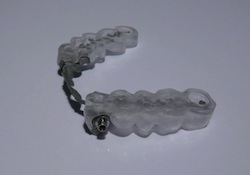
Figure 1 – final snoring guard without retaining bars
Unfortunately most CAD/CAM systems used by dental labs are purpose-built solutions with limited capabilities beyond standard restoration design. When market opportunities arose for novel products such as this one, involving patient specific designs like the guard and custom made components like the splints, technicians were left to assemble their own patchwork of solutions – or revert to non-digital methods. Informal dialogues revealed that another dental lab in Germany had quietly devoted nearly one year’s worth of time involving ten of its staff members in trying to design a technology solution for digital snoring guard design and production – only to abandon the effort due to production complexity.
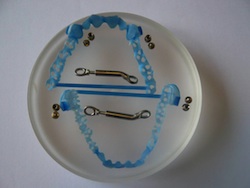
Figure 2 –PMMA parts designed in Freeform
The Good News
Enter the Geomagic (formerly Sensable) Freeform 3D design system, which Bressem Zahntechnik, a lab in Recklinghausen owned by master technician Joerg Bressem, had purchased the previous year. As a voxel based CAD system in contrast to geometry-based dental CAD systems – it provides unlimited flexibility to design the organic, asymmetric curves found in a snoring guard. It also allows users to save their designs in the industry standard STL format, and electronically transfer the STL files to specialty milling and production firms.
Freeform significantly streamlined the design of the metal framework, a complex, but rather standard shape. It also allowed the freedom to customize the acrylic splint parts to accommodate the wide variation in mouth shapes and sizes. It also provided the ability to precisely locate the attachment bars with computerized speed and accuracy.
Being able to work digitally on this project meant that the project could take advantage of fabrication in new monomer-free acrylic materials -less likely to cause mouth sensitivity - from third-party manufacturing partners, as well as new additive manufacturing techniques such as laser melting for the frameworks – which couldn’t have been used if the design had been hand fabricated.
The innovative workflow was fast, simple and straightforward:
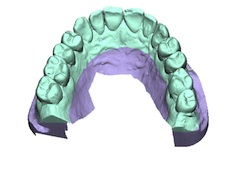
Figure 3 – SmartOptics impression scan.
- Utilized Freeform features such as Emboss which allowed the rapid generation of patterns for the mesh areas of the partial framework. In addition, when designing with Freeform, users hold a haptic (force feedback) device instead of a computer mouse – so they can literally “feel” the 3D digital model that is being designed on-screen, ensuring that the framework rests correctly on the teeth. This touch-enabled design approach also provides true 3D navigation, for added production efficiency.
- Designed the acrylic mouth guard or splint parts that are worn on each arch. The Freeform design software made it fast and easy to design highly organic 3D shapes – even novel shapes such as the mouth guards. If the acrylic splints were designed manually using wax, at this point in the process the technician would need to go get another lump of wax and develop another splint design to fit correctly with the metal partial framework. But because the process was digital, the technician simply imported the STL file of the metal partial design, and used it as a starting point from which to create the companion acrylic splints. Easy to understand system commands such as “Extrude” and “Remove” allowed rapid shaping of the digital wax into the 3D model of the splints.
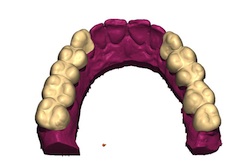
Figure 4 - snoring guard design
- Defined the precise location of the retaining bars, once the metal component and acrylic splint parts were designed. The system’s ability to define a plane, and thus specify the exact angle and affixing points for each retaining bar, significantly reduced the amount of time this required compared to a manual approach.
- Created resin patterns for both the partial framework and the splints on a 3D printer after the designs were complete, to visually inspect them and share them with the dentist.
- Created two STL files once the designs were complete, and electronically sent them to production centers authorized by Sensable to produce high-quality parts. For the metal partial, design files went to Innodema of Belgium, for direct metal printing. For the acrylic splints, the STL file went to the lab’s manufacturing partner, FDZ in Neu-Ulm, which specializes in milling innovative acrylic materials. They used a light-cured monomer-free polymethyl methacrylate (PMMA) acrylic. The final parts were polished and provided to the Dr. Langenhan for delivery to the patient.
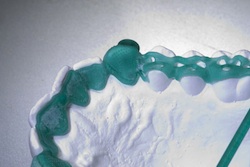
Figure 5 - Freeform-designed splint as 3D print used for casting
Flexibility To Help Business Grow
After having worked with a number of digital dental design systems, the Bressem Zahntechnik staff felt that the Freeform-based system was the only solution that provided the flexibility to design this new type of snoring guard – because it provided the design freedom and tools to create what Dr. Langenhan envisioned and what many patients need. It provided the automation and speed of a digital solution, yet the flexibility to digitally ‘wax’ just the right shapes and to customize the devices for individual patients, as needed.
Furthermore, Freeform allowed Dr. Langenhan to fulfill his interest in exploring the use of new materials and techniques such as a monomer-free acrylic for the splints. Monomers emit tiny amounts of potentially toxic chemicals when handled or worn extensively. The emissions are of increasing concern to some patients, doctors and even lab technicians who mill these materials and thus are exposed to breathing monomer dust. Freeform allowed the team to design restorations that could be fabricated in monomer-free acrylic. More importantly, it also provided a highly precise fit so that if a monomer acrylic is used, they require less milling which reduces dust.










